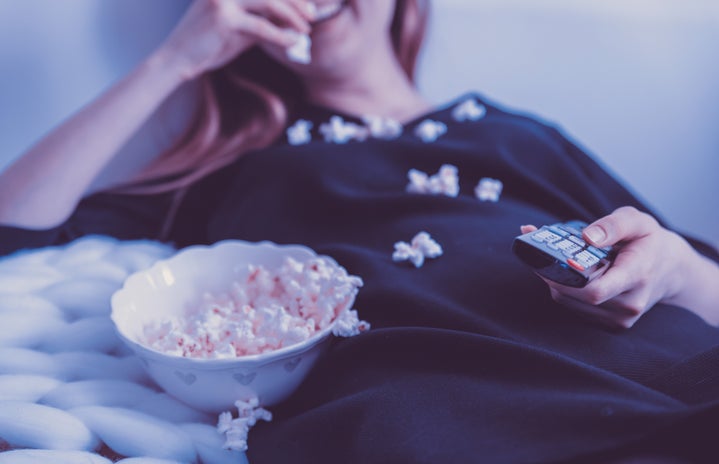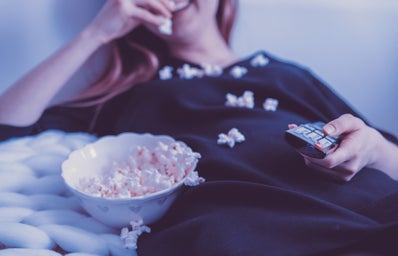On Feb. 7, the most recent movie with an all-female cast premiered: “Birds of Prey and the Fantabulous Emancipation of One Harley Quinn.” This movie was based on the DC Comics characters Harley Quinn and the women of Birds of Prey. It centers around Harley asserting her independence after her breakup with the Joker (as seen in “Suicide Squad”) and the creation of the Birds of Prey team. Besides the many scenes of angry women kicking men’s butts, there were many scenes of Harley going through her breakup with no ugly part spared. The director, Cathy Yan, did not shy away from showing the tears, eating cheese from a can, and making a fool of yourself at a club that we may or may not be able to relate to.
If you’ve seen both “Suicide Squad” and “Birds of Prey,” you may have notice that Harley Quinn seems different in each film. Not because the acting or character is different per say but because how the film shows her. We can see the way portrayals of women differ depending on the director and the perceived audience. Most of the time women in film are sexualized with long, lingering shots on their body, and every time it’s with a male director. With so few female directors it’s always overwhelmingly refreshing to watch a film starring women that focuses on things besides her sexuality. The former perception is known as the “male gaze.”
What does female/male gaze mean?
As defined by Oxford Reference: “In film theory, the point of view of a male spectator reproduced in both the cinematography and narrative conventions of cinema, in which men are both the subject of the gaze and the ones who shape the action and women are the objects of the gaze and the ones who are shaped by the action.” We see the male gaze in “Suicide Squad” simply by the way Harley is dressed. She’s wearing low-rise ultrashort booty shorts that very few women would opt to wear, and she’s in a shirt claiming to be “Daddy’s Lil Monster.”
There are many moments in the film where the camera pans her body, lingering on breasts, butt and toned stomach. She was portrayed as the hot crazy chick with her dancing on poles, licking the bars of her cage and doing acrobatics in her cell. She was a pixie dream girl for the men in the audience. An interesting character who brought humor while throwing punches at the enemies, she was shrunk to being Joker’s girlfriend and an attractive character to look at.
“Birds of Prey” almost seems to present a different Harley Quinn. Her outfits throughout the film are flattering but wearable. High-waisted shorts, overalls, sequined suit jacket and a t-shirt covered in her name are items that are quirky enough to fit Harley’s personality while being actual pieces of clothing that women would wear. The fact that her shirt in the film is covered in her name is a message, she belongs to herself, not daddy. Having the film start off with Harley announcing her independence from the Joker by blowing up the chemical plant that started their relationship let the world know that Harley Quinn is her own woman.
It’s not just the clothes that show the female gaze, but the misogyny throughout the whole movie. It’s seen by Black Mask’s henchman who belittles Black Canary by associating her as Black Mask’s favorite new toy. The scene where Black Mask forces a woman to get on a table and strip for the whole club because he thought she laughed at him is another example. It brings a quote to mind by Margaret Atwood, “Men are afraid that women will laugh at them. Women are afraid that men will kill them.” It’s not just these scenes where we see how the men have harmed women, but by Joker’s and Black Mask’s voices that haunt Harley telling her she can’t be anyone without them and that she’s not the king of girl to do great things without a man. It’s an acknowledgement of the pain Harley went through with her toxic relationship with the Joker. Yet, she remembers who she is and says, “I’m the one they should be scared of. Not you, not Mr. J, because I’m Harley freakin’ Quinn.”
Why does it matter?
Media shapes how we view things. The more women we see being shrunk down to their body will keep the mindset of women being little more than what they look like. It’s so important to have complex, diverse women on screen to hopefully represent a vast majority of women. When we see a women that seems real, we feel seen and heard. We all deserve to feel that way. It’s why we need to keep asking both for more women behind the scenes and in front of the camera.


